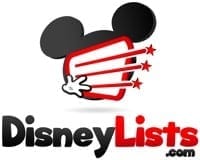A Walt Disney World Retrospective: Ten Magical Milestones of the 1980s
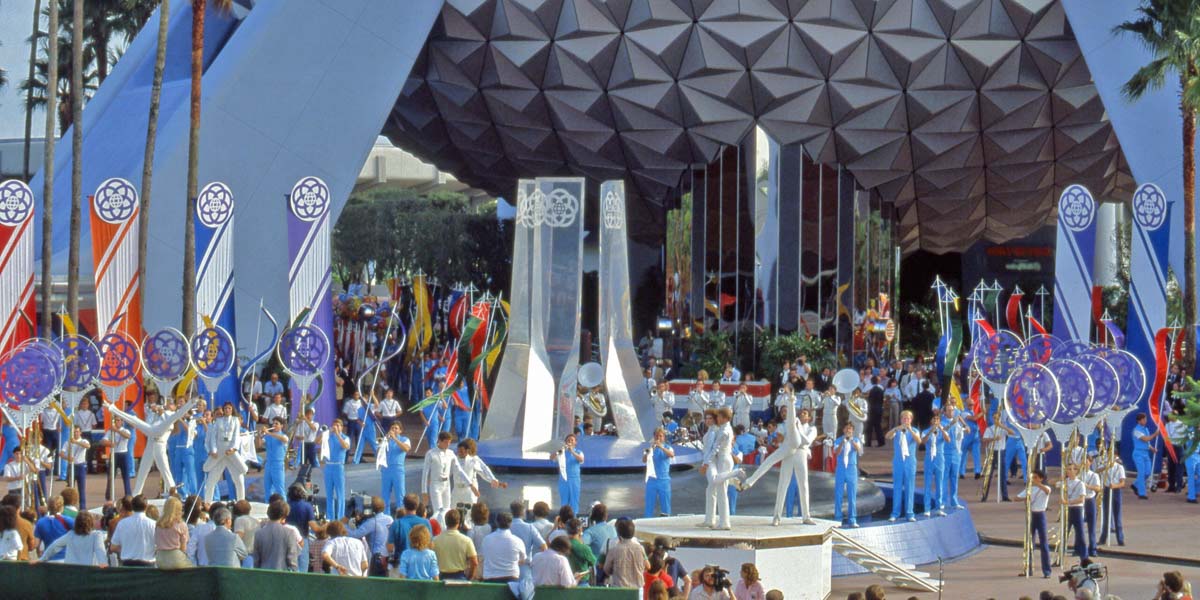
Joy. Hope. Friendship.
A place where “human achievements are celebrated through imagination, wonders of enterprise, and concepts of a future that promises new and exciting benefits for all.”
While this phrase served as the introduction for the dedication plaque and accompanying speech given by Disney CEO E. Cardon “Card” Walker as he opened EPCOT Center on October 1, 1982, it also perfectly describes the 1980s at the Walt Disney World Resort. This decade, which saw a change in Disney leadership, two new theme parks, the opening of classic and beloved attractions, and events that would shape the future of the Walt Disney Company, truly fulfilled the vision communicated by Walker on that day forty years ago: that the Walt Disney World Resort experience would “entertain, inform and inspire…and instill a new sense of belief and pride in man’s ability to shape [the] world.” Learn more about ten magical milestones in the 1980s below.
10 – The Living Seas
With the opening of EPCOT Center in the 1980s a new term became more commonly used throughout the Walt Disney Company: edutainment. A number of new pavilions, exhibits and attractions aimed at both entertaining and educating guests, fulfilling Walt Disney’s original hope for his Experimental Prototype Community of Tomorrow: a place dedicated to “introducing, and testing, and demonstrating new materials and new systems…a showcase to the world of the ingenuity and imagination of American free enterprise.” While The Living Seas was not an opening day attraction, it quickly became popular to guests and a significant world record-breaker: when it opened in 1986, the pavilion’s aquarium was the largest saltwater tank in the world, holding 5.7 million gallons of water, or large enough to hold all of Spaceship Earth. The exhibit served as a great symbol of what EPCOT Center was meant to be: a hope-giving attraction engaging for guests, a demonstration of marine biology including training dolphins and caring for manatees, and an opportunity for guests–children and adults alike–to learn about the world below the waves.
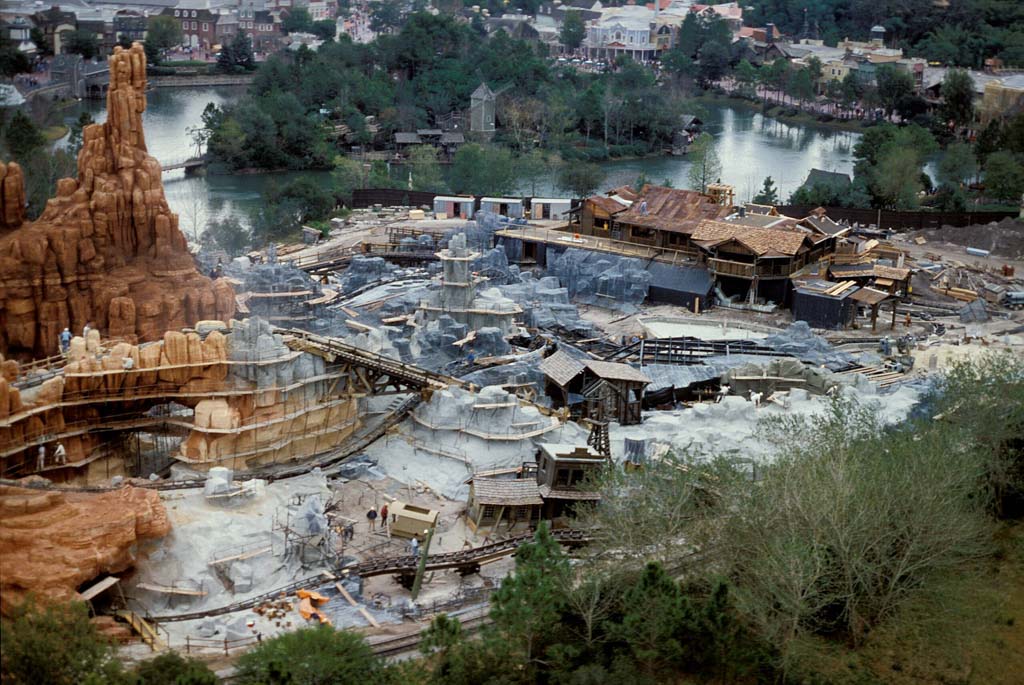
9 – Big Thunder Mountain Railroad
Good ideas never die at Disney. In the late 1970s, Marc Davis’s concept for the Western River Expedition, which would take guests on a ride through a frontier town teeming with cowboys and outlaws, was scrapped, leaving a distinct lack of indoor attractions for the Magic Kingdom’s Frontierland. Instead, it was decided that Disney would move forward with Pirates of the Caribbean, which had found popularity at Disneyland. Tony Baxter, a young Imagineer who had worked alongside Davis in designing the Western River Expedition, was reluctant to let all their hard work go to waste. Borrowing many elements from the cancelled dark ride, Baxter created Walt Disney World’s first outdoor roller coaster using the relatively new process of computer-aided design. The attraction, dubbed “the Wildest Ride in the Wilderness” would open in 1980, adding the second peak to the famed Disney World “Mountain Range.”
8 – Journey Into Imagination/Horizons
For those of us that visited EPCOT Center during its first decade-and-a-half, a strong sense of nostalgia permeates our memories of Walt Disney World’s second park. While the Living Seas’ hydrolators and the singing vegetables in the Kitchen Kabaret were great, they pale in comparison to their more fantastic and memorable counterparts: Journey Into Imagination and Horizons, which both opened in 1983. Decades later, the memory of the Dreamfinder’s dirigible floating into view still brings excitement to the Little Andrew inside me, while the futuristic scenes and “Choose Your Ending” option in Horizons is still fascinating and inspiring. In fact, Journey Into Imagination was so synonymous with the spirit of EPCOT Center that Figment became the unofficial mascot of the park. Soon, Figment merchandise was everywhere (including in my bedroom–my parents purchased a small plush of the character for me during one of my early trips), while a cast member dressed as the Dreamfinder carried a puppet of Figment around to interact with guests. Almost as amazing was the Imageworks, an interactive technological playground on the pavilion’s second floor where guests could use their senses to interact with the digital environment (and many of us were first introduced to touch screens). Unfortunately, neither of these attractions are around anymore: Horizons closed in 1999 to make way for Mission: Space, while Journey Into Imagination has gone through two refurbishments, in 1999 and 2002. Thank goodness for the quality ride-through videos on YouTube!
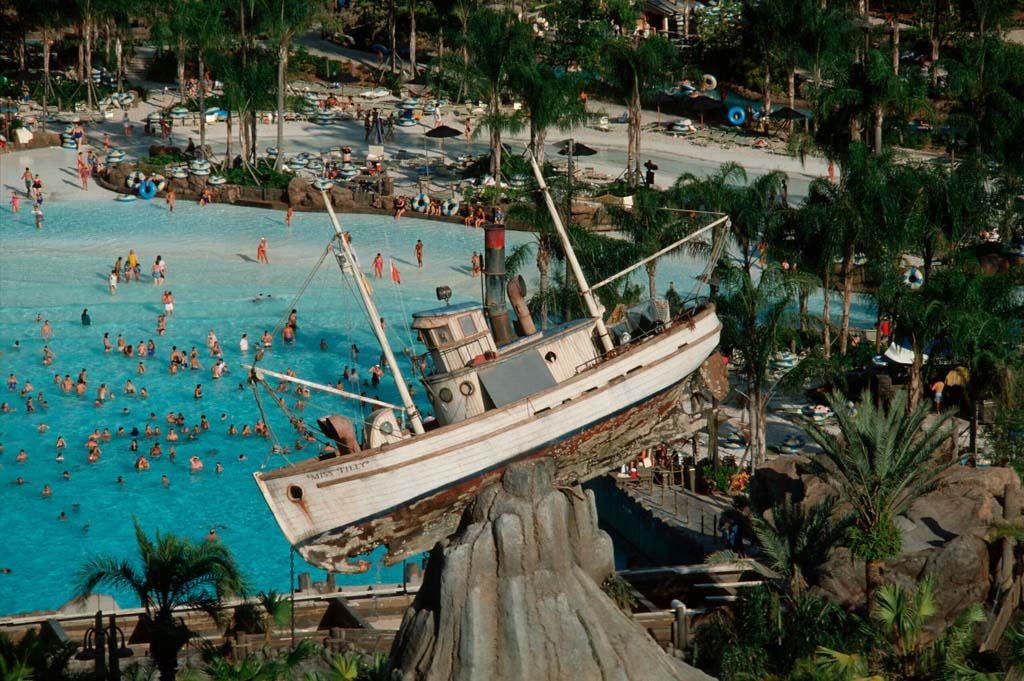
7 – Typhoon Lagoon
Walt Disney World’s second waterpark opened on June 1, 1989, just in time for the start of summer. With new resorts and theme parks in Walt Disney World, more activities and amenities were needed for guests to engage them and keep them on property (and spending money) longer. With Michael Eisner and Frank Wells as the new leadership over the Walt Disney Company in the mid- to late-1980s came more of a focus on imaginative theming and storytelling in the theme parks. As a result, this new water park, which eased many of the crowds flocking to River Country, was rich in story and themed elements that placed guests in a particular situation. According to legend, a strong typhoon had made landfall over central Florida, destroying a beautiful lagoon in the heart of Walt Disney World. In its wake, the storm left twisted trees, surfboards scattered amongst branches, and even a shrimp boat that had been deposited atop Mount Mayday in the center of the park.
6 – Mickey’s Very Merry Christmas Party
The holidays are a very special time throughout Walt Disney World. While the park had decorated for Christmas since its early years, the Walt Disney Company decided to capitalize on the massive crowds that descended on the Magic Kingdom in the days and weeks surrounding Christmas and New Years. On December 16, 1983, the first Mickey’s Very Merry Christmas Party was held, inviting guests to enjoy a holiday-themed parade complete with dancing reindeer and marching toy soldiers. These events, which celebrated the joy of the season, culminated in Walt Disney World’s Very Merry Christmas Parade, which first aired on ABC on December 25th of the same year, not only beginning an annual tradition for many after opening gifts, but also serving as an advertising opportunity to pique the interest of potential guests. Over the years, this celebration has increased with popularity, expanding in date availability for the after-hours event, beginning in early November and continuing through late December.
5 – Pleasure Island
As the 1980s continued, Walt Disney World often found itself in a state of competition with other local attractions that began to spring up. For instance, downtown Orlando had featured a nightclub district, Church Street Station, which had opened in 1972 and featured a number of dance clubs and music venues. Recognizing that many of the young adult guests were leaving Walt Disney World property to frequent these venues, it was determined that the resort would create its own nightclub district. Pleasure Island, which opened in 1989, served as a major expansion and refurbishment of part of the Disney Village Marketplace shopping district and would include music venues, dance clubs, and comedy clubs that would entertain guests into the wee hours of the morning. Here, friends could celebrate in a place where, Disney argued, “every night was New Year’s Eve.”
4 – Grand Floridian Resort and Spa/ Caribbean Beach Resort
With the growth and expansion of the Walt Disney World Resort under Michael Eisner and Frank Wells, it became important that the property expand to accommodate more guests as they arrived for the two additional theme parks and water park opened by the end of the decade. For the first time in thirteen years, two new resort hotels opened in 1988, adding more than two thousand guest rooms to the resort. The Grand Floridian Resort hearkened back to grand turn-of-the-century hotels along the Florida coasts, while the Caribbean Beach had a distinctly tropical feel complete with the pastel tones and a swimming pool surrounded by a crumbling Spanish fortress. Whether the sounds of a big band orchestra or the distinct tones of a steel drum surrounded guests in these two resorts, it didn’t take much imagination to transport oneself into a unique time and place.
3 – Walt Disney Feature Animation Florida
The 1980s found Walt Disney Feature Animation in serious trouble. After a number of box office failures including The Black Cauldron and Pete’s Dragon, it was determined that the studio had reached “rock bottom,” and considerations were made to sell off parts of the company. With the corporate takeover of Michael Eisner, Frank Wells, and Jeffrey Katzenberg, the new chairman of Disney’s film division, a “new Renaissance” in Disney animation arrived, resulting in successful films including The Little Mermaid, Oliver and Company, and Who Framed Roger Rabbit? With the growth of the animation department, a second studio was opened in Orlando in 1989 at the new Disney-MGM Studios theme park, bringing a renewed sense of hope to the Walt Disney Company. This allowed not only for many of the “less important” projects to be produced outside of the Burbank studio, such as animated shorts and feature films deemed less important, but it also gave theme park guests an opportunity to witness animators working on films currently in production through the Backstage Tour attraction. Over the course of the next fifteen years, Walt Disney Feature Animation Florida would produce several shorts, as well as sequences for The Lion King and the entirety of Mulan and Lilo & Stitch.
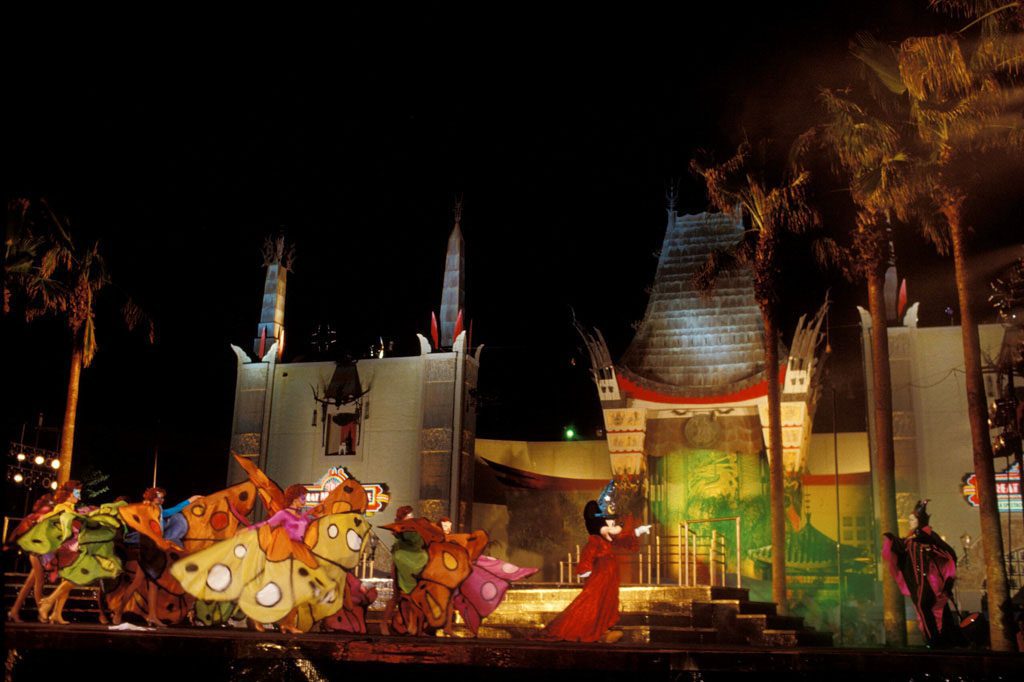
2 – Disney-MGM Studios
Initially planned to be a pavilion offering guests a “trip through the movies” at EPCOT Center, Disney-MGM Studios opened as Walt Disney World’s third theme park (and an operating movie studio) in 1989 after a deal was struck with Metro-Goldwyn-Mayer allowing Disney to license the MGM name, logo, and films including The Wizard of Oz and Singing in the Rain. This new park originally allowed guests an opportunity to explore Hollywood and moviemaking both from the perspective of a filmgoer and from a backstage perspective. In the first year of operation, guests could travel into the movies on The Great Movie Ride, housed in the famed Grauman’s Chinese Theater; see how stunts were choreographed at the Indiana Jones Epic Stunt Spectacular; and witness firsthand the creation of hand-drawn animation, movie sets, props, special effects, and costumes during the multi-hour Backlot Studio Tour. The magic made at this third theme park didn’t make it difficult for guests to use their imagination in entering “the magical journey into the movies…the stuff dreams are made of.”
1 – EPCOT Center
While Walt Disney World’s second theme park did not live up to the initial plans set forth by Walt Disney, it certainly created a new type of theme park experience than what guests familiar with Disneyland and the Magic Kingdom were used to. EPCOT Center was more focused on both educating and entertaining guests by demonstrating current industries and technologies, as well as creating a global community through the World Showcase pavilions. While initially not distinctly “Disney” (characters from the Disney films and animated shorts were not represented in the park during its early days), EPCOT Center would eventually combine Disney magic with three concepts that would become synonymous with the Walt Disney Company: joy, hope, and friendship.
More on our Walt Disney World Retrospective:
Click here to learn more about ten magical milestones in the 1970s.
For a no obligation, FREE Quote on a Disney vacation package, please contact our travel partner Magical Vacation Planner at 407-442-0227 (407-442-0215 for Spanish). You can also request a FREE quote online by Clicking HERE.
